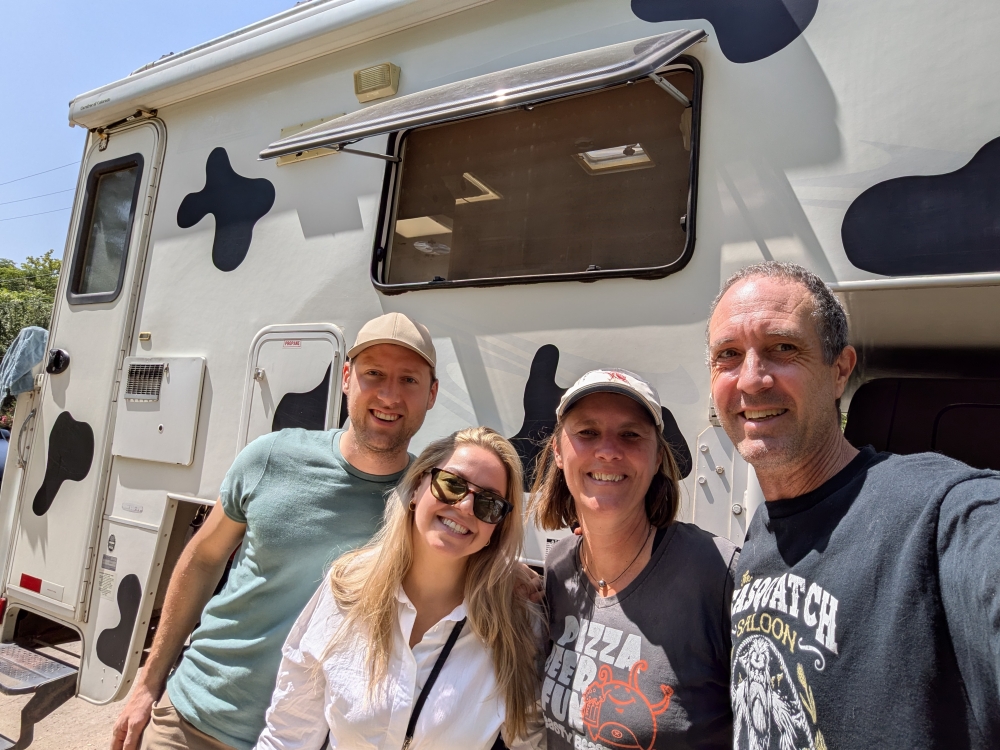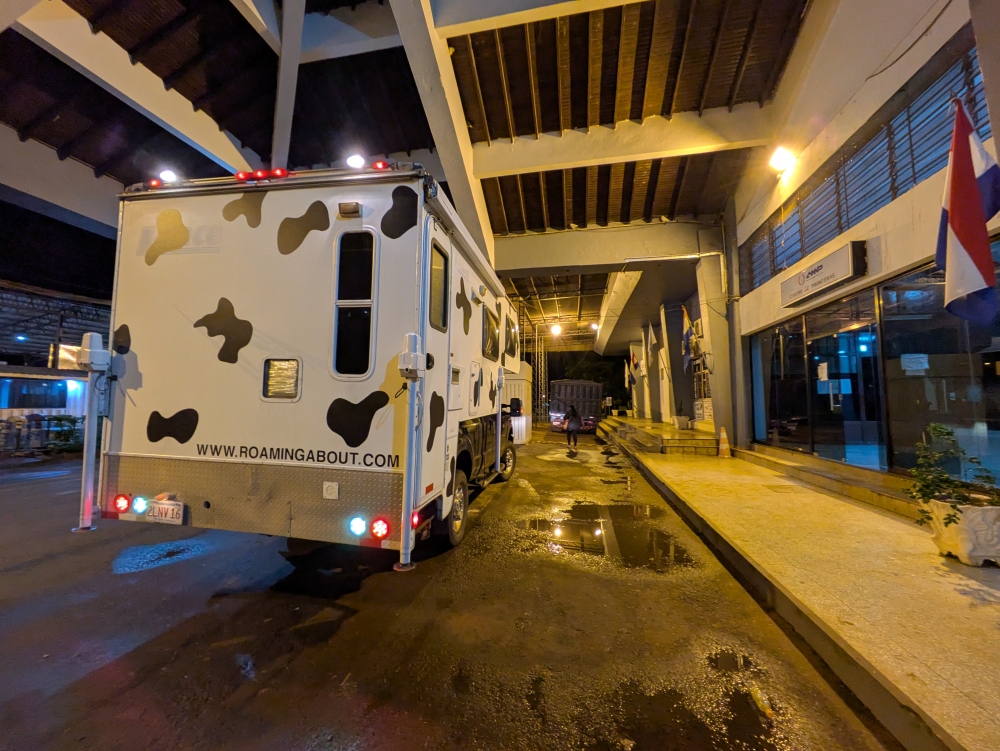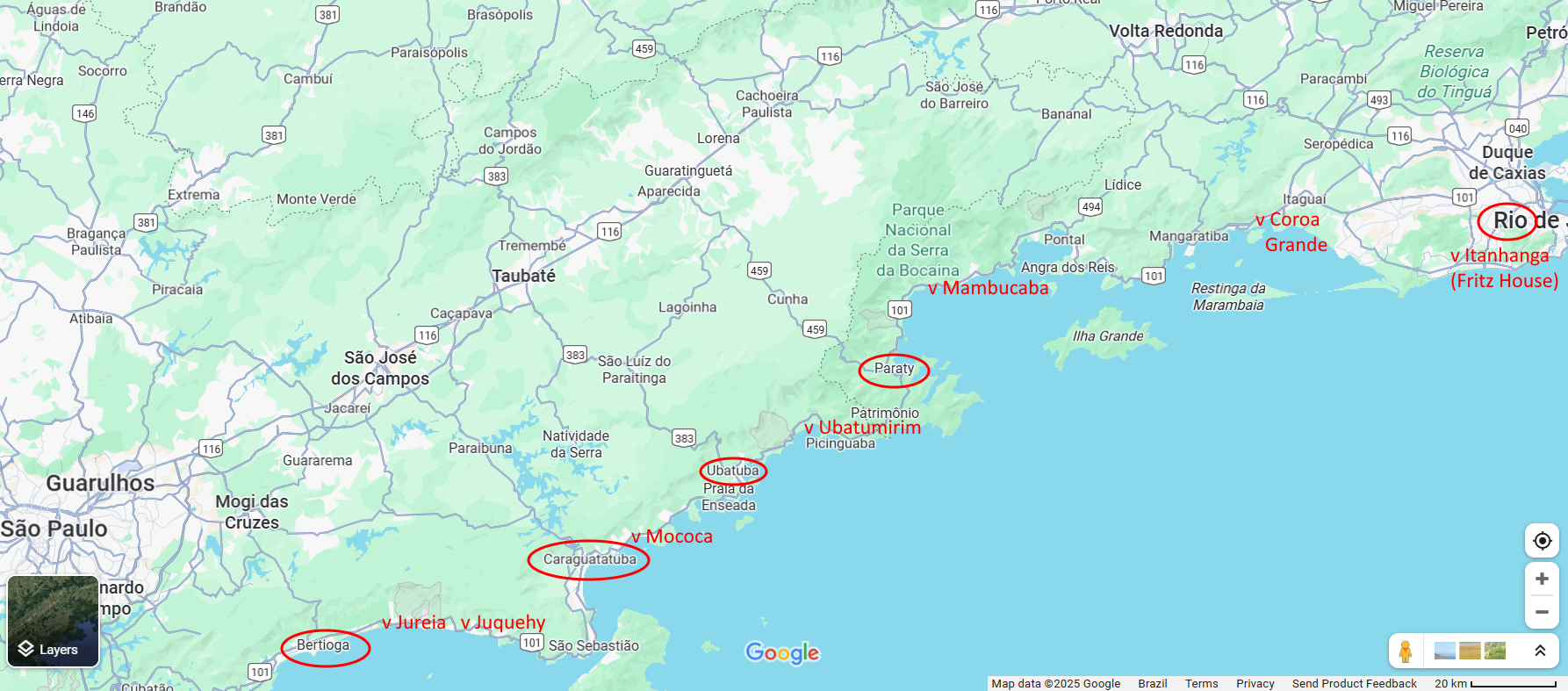Ushuaia, the southern-most city of the South American continent, was a pleasant surprise with its excellent free camping, well-developed trails, and beautiful mountain scenery. But, by the time we left in our camper, Mark and Maya had been there for five weeks and I for over three, due to my 10-day trip to Antarctica.

Topping up our propane tank once more at Sartini Propane in Ushuaia – the best place ever!

Leaving Argentina on my first day back to shore

Back to Chile!
Needless to say, Mark was more than ready to head north again, especially since the weather had turned rainy. So, from the moment I disembarked the MV Ushuaia, we topped up our propane tank, received copies of our dog paperwork from the friendly attendant after asking for this favor, and left. Mark had taken care of groceries, fuel, and drinking water during my absence.
(As always, click on or hover over photos in galleries to read their captions.)

Still driving at the end of the world.

Monument of the wind
We made decent progress that first day I was home, but I felt like I was thrown right back into our challenging lifestyle. Extremely strong headwinds made the drive dangerous and ruined our fuel economy. We lost an hour at a fuel station near the border with Chile, because they were out of gas. We waited for the tanker to supply the station and filled up our truck and a jerrycan. This container travelled at my feet and was leaking profusely, spilling liquid and fumes. At the border in Chile, officials took all our beans and lentils, which had never been a problem before. And, the next morning, we woke up to a flat tire!

Quiet night along a dirt road in Tierra del Fuego

We woke up to this. Ooops.

Before the relentless wind started, Mark put our spare tire on.
Day two started with a tire repair kit that didn’t work, us installing the spare tire before the relentless wind picked up, and Mark discovering that the flat was caused by the car reversing onto a screw that had fallen off our own camper due to all the bumpy, gravel roads! Irony is ever a big part of our lives. We left Tierra del Fuego on a ferry and continued our journey north to the real Patagonia, covering a chunk of miles every day.

A guanaco jumping over a fence: we hated watching this as some of them get caught this way and die a horrible death.

Taking the same ferry off Tierra del Fuego from two months prior

It was a tight fit!
That day ended unexpectedly as well. We had parked at the only level spot, in front of a small, seemingly abandoned boat that rested on the grass, not on a trailer. At 10:30pm, commotion outside had us up and about. You guessed it. Exactly on this particular Sunday evening, someone needed to pick up this particular boat! So, we moved. This one had us laugh out loud…

Camped in front of what appeared to be an unused boat…

Right! At 10:30pm, someone decided to pick up this boat, so we moved.
A detour to Punta Arenas was necessary to get our tire fixed with the last local cash we had and to stock up on groceries, Chilean pesos, alcohol, and Maya’s dogfood. You have no idea how much Mark and I had been looking forward to visiting these decent, affordable stores. We could finally splurge on a few items that are unavailable or unaffordable in Argentina!

Getting our punctured tire fixed in Punta Arenas, Chile

One more time, Mark installs a tire on our truck. It was cheaper this way, especially since we only had so much Chilean pesos in cash left.

Splurging on some favorite booze

Mushrooms are affordable in Chile. Yay!

And another massive bag of dogfood for Maya, which we have only been able to buy in Colombia and Chile thus far.
The next town in Chile, Puerto Natales, also required a stop for more errands. We dropped off our dirty sheets, towels, and jeans, made dentist appointments for teeth cleanings, topped up with potable water, took Maya for a walk, and did work and research while waiting for our laundry to be done. I started to feel sicker and realized I must have picked up a bug on the expedition ship.

Welcome to Puerto Natales!

Old train engine in Puerto Natales, Chile

Church in Puerto Natales

Another historic building in town

Taking Maya for a walk in this clean and attractive town

Decent camping spot, despite being in a city

The harbor is full of fishing boats

Now this is a much cooler monument to commemorate the wind!

And we found another “Hand” sculpture by artist Mario Irarrázabal. We spotted two before, in Chile and Uruguay.
One of the main attractions in this part of Patagonia is Torres del Paine National Park. We had found an amazing free camping spot in iOverlander, one that friends had recommended, and looked forward to resting up and working in this pretty location, across from a river and the incredible park.
Continue readingLike this:
Like Loading...











































































































































































































































